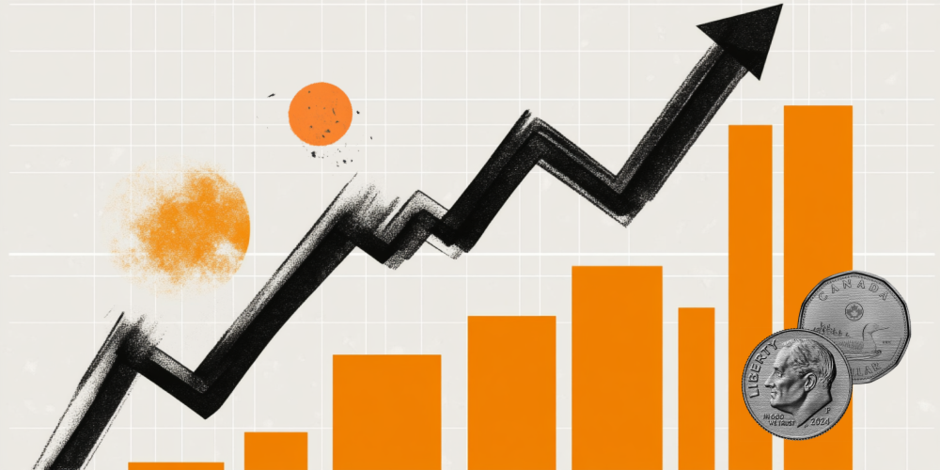USD/CAD Price Forecast: Advances to 1.4400 neighborhood; lacks bullish conviction
- USD/CAD regains positive traction and draws support from a combination of factors.
- Fed rate cut bets continue to undermine the USD and cap the upside for the major.
- The mixed technical setup warrants caution before placing aggressive directional bets.

The USD/CAD pair attracts some dip-buyers in the vicinity of mid-1.4300s during the Asian session on Thursday and reverses a part of the previous day's losses. Spot prices climb to the 1.4400 neighborhood in the last hour, though a combination of factors might keep a lid on any meaningful upside.
The Canadian Dollar (CAD) continues to be weighed down by the Bank of Canada's (BoC) seventh consecutive interest rate cut on Wednesday and the escalating US-Canada trade war. Apart from this, the lack of follow-through buying around Crude Oil prices undermines the commodity-linked Loonie and acts as a tailwind for the USD/CAD pair. However, the underlying bearish tone around the US Dollar (USD), amid bets that the Federal Reserve (Fed) will cut rates several times this year, caps the upside for the currency pair.
From a technical perspective, the USD/CAD pair, so far, has been struggling to find acceptance above the 1.4500 psychological mark and the subsequent slide warrants caution for bullish traders. That said, positive oscillators on the daily chart suggest that any further decline is likely to find decent support near the 100-period Simple Moving Average (SMA) on the 4-hour chart, currently pegged around the 1.4345 area. A sustained break below, however, might prompt aggressive selling and pave the way for deeper losses.
The USD/CAD pair might then weaken further below the 100-day SMA, around the 1.4215 area, the 1.4200 mark, towards testing the year-to-date low, around the 1.4150 region set on February 14. Spot prices could eventually drop to the 1.4100 round-figure mark.
On the flip side, a sustained strength beyond the 1.4500 mark could allow the USD/CAD pair to test the monthly swing high, around the 1.4540-1.4545 region. Some follow-through buying could lift spot prices to the 1.4600 round figure en route to the 1.4670 region and the 1.4700 mark. The momentum could extend further towards the 1.4800 neighborhood, or the highest level since April 2003 touched last month.
USD/CAD 4-hour chart
Canadian Dollar FAQs
The key factors driving the Canadian Dollar (CAD) are the level of interest rates set by the Bank of Canada (BoC), the price of Oil, Canada’s largest export, the health of its economy, inflation and the Trade Balance, which is the difference between the value of Canada’s exports versus its imports. Other factors include market sentiment – whether investors are taking on more risky assets (risk-on) or seeking safe-havens (risk-off) – with risk-on being CAD-positive. As its largest trading partner, the health of the US economy is also a key factor influencing the Canadian Dollar.
The Bank of Canada (BoC) has a significant influence on the Canadian Dollar by setting the level of interest rates that banks can lend to one another. This influences the level of interest rates for everyone. The main goal of the BoC is to maintain inflation at 1-3% by adjusting interest rates up or down. Relatively higher interest rates tend to be positive for the CAD. The Bank of Canada can also use quantitative easing and tightening to influence credit conditions, with the former CAD-negative and the latter CAD-positive.
The price of Oil is a key factor impacting the value of the Canadian Dollar. Petroleum is Canada’s biggest export, so Oil price tends to have an immediate impact on the CAD value. Generally, if Oil price rises CAD also goes up, as aggregate demand for the currency increases. The opposite is the case if the price of Oil falls. Higher Oil prices also tend to result in a greater likelihood of a positive Trade Balance, which is also supportive of the CAD.
While inflation had always traditionally been thought of as a negative factor for a currency since it lowers the value of money, the opposite has actually been the case in modern times with the relaxation of cross-border capital controls. Higher inflation tends to lead central banks to put up interest rates which attracts more capital inflows from global investors seeking a lucrative place to keep their money. This increases demand for the local currency, which in Canada’s case is the Canadian Dollar.
Macroeconomic data releases gauge the health of the economy and can have an impact on the Canadian Dollar. Indicators such as GDP, Manufacturing and Services PMIs, employment, and consumer sentiment surveys can all influence the direction of the CAD. A strong economy is good for the Canadian Dollar. Not only does it attract more foreign investment but it may encourage the Bank of Canada to put up interest rates, leading to a stronger currency. If economic data is weak, however, the CAD is likely to fall.
Author

Haresh Menghani
FXStreet
Haresh Menghani is a detail-oriented professional with 10+ years of extensive experience in analysing the global financial markets.


















